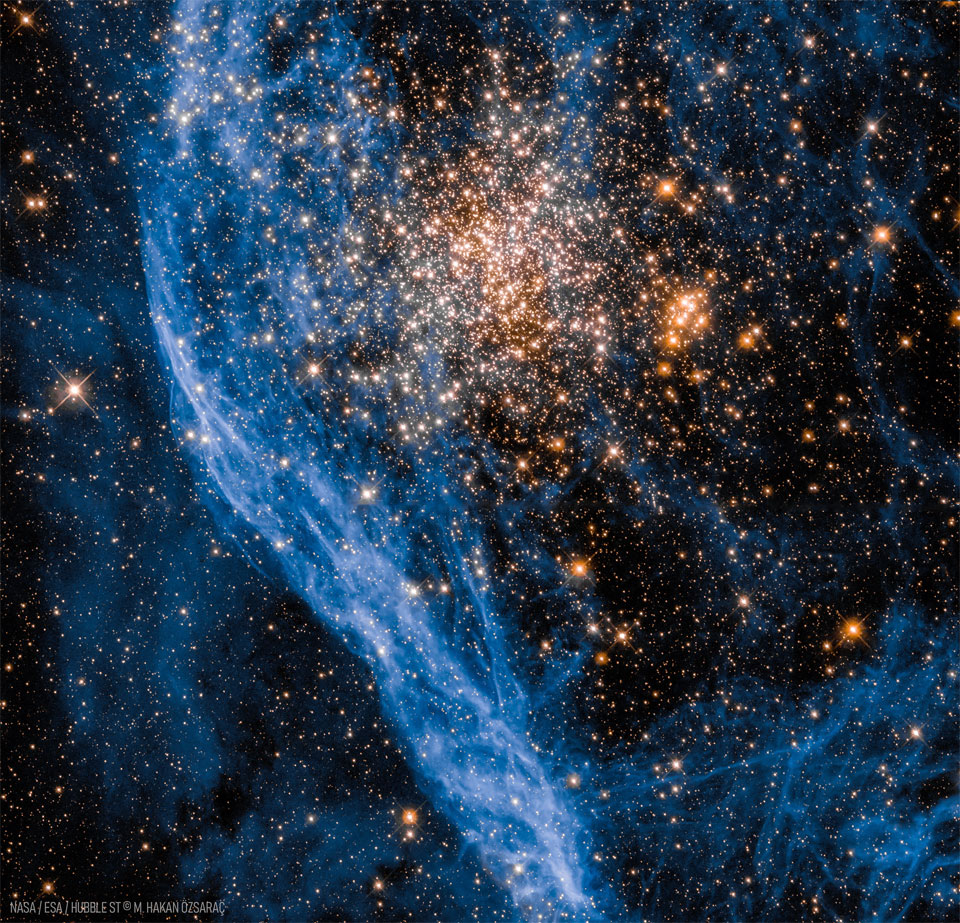Astronomy Picture of the Day
Discover the cosmos! Each day a different image or photograph of our fascinating universe is featured, along with a brief explanation written by a professional astronomer.
Image Credit: NASA, ESA and P. Goudfrooij (STScI); Processing: M. H. Özsaraç (Türkiye Astronomi Derneği)
Explanation: There is nothing like this ball of stars in our Milky Way Galaxy. This is surprising because, at first glance, this featured image by the Hubble Space Telescope suggests that star cluster NGC 1850's size and shape are reminiscent of the many ancient globular star clusters which roam our own Milky Way Galaxy's halo. But NGC 1850's stars are all too young, making it a type of star cluster with no known counterpart in the Milky Way. Moreover, NGC 1850 is also a double star cluster, with a second, compact cluster of stars visible here just to the right of the large cluster's center. Stars in the large cluster are estimated to be 50 million years young, while stars in the compact cluster are younger still, with an age of about 4 million years. A mere 168,000 light-years distant, NGC 1850 is located near the outskirts of the Large Magellanic Cloud galaxy. The glowing gas filaments across the image left, like supernova remnants in our own galaxy, testify to violent stellar explosions and indicate that short-lived massive stars have recently been present in the region.
Authors & editors: Robert Nemiroff (MTU) & Jerry Bonnell (UMCP)
NASA Official: Phillip Newman Specific rights apply.
NASA Web Privacy Policy and Important Notices
A service of: ASD at NASA / GSFC,
NASA Science Activation
& Michigan Tech. U.
This is an automated email. If you notice any problems, just send me a note at gtracy@gmail.com. You can add and remove email addresses to this distribution list here, https://apodemail.org.Unsubscribe

No comments:
Post a Comment